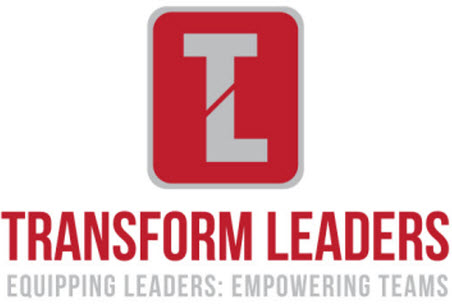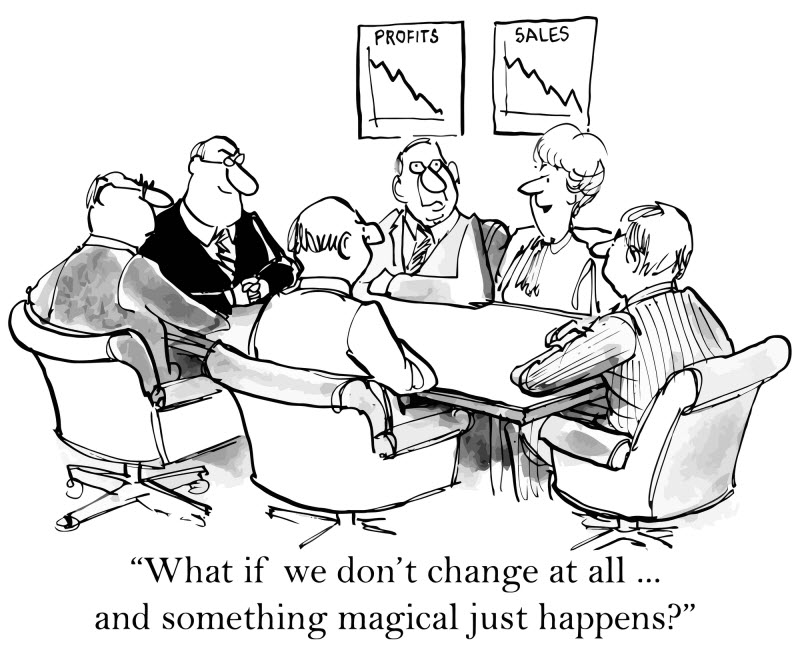Leadership is about seeing things as they are, whilst also seeing things as they could be.
Leaders (I’m not talking about just people with positional power but about anyone who wants to produce change) see something and says to themselves, “This can be better.†Leaders live with the constant tension between what is, the status quo, and what they see as the possibility of what should or could be.
This means we are talking about change and being change agents.
There are two types of change to move your team or organisation forward. The first requires mainly stroke of the pen’ and the second requires behavioural change.
Stroke of a pen change are those you execute just by ordering or authorizing them to be done. If we have the authority and the money we can generally produce the changes. It might be things like reorganization of peoples roles and responsibilities, a change to the compensation system, capital investments, advertising etc. It will take planning, effort, brains, guts and money, you know that in the end it is going to happen.
The second types of change are those that require behaviour change for those around you. This type of change is very different and much more difficult to successfully achieve. You can’t just order change to happen, because executing these changes requires getting people – often a lot of people – to do something different. If you have ever tried to get other people to change their ways you know how difficult that is. Behavioural change is ultimately about influencing people to change beliefs and behaviour.
Before you read on think about how much change you have been involved in leading has not involved some level of behavioural change from those around you. The answer is often, very little. Even the stroke of the pen type changes that seem easy cut and dried often require adjustments and change.
Creating change is the litmus test for how effective we are as leaders.
One of my favourite quotes comes from Jim Stuart, “To achieve a goal you have never achieved before, you must start doing things you have never done before.â€
In a key study on organizational change, global consulting firm Bain & Company report these findings: “About 65% of initiative require significant behavoural change on the part of front line employees – something that managers often fail to consider or plan for in advance.â€
It is common to hear a leader saying, “I wish Tom, Jenny and Peter would just get on board. They are so recalcitrant and stubborn. They aren’t team players or accepting that things have changed.†The people become the problem. Very rarely do you heard a leader saying: “I wish I were better at influencing change and help my team to make the behavioural changes needed.â€
You can look out of the window and blame people for a lack of change or culture of resistance. Or you can look at the mirror and ask: how do I get better as an influencer of change.
Often when we think of the idea of being influential we think of the ability to persuade people. We think of charismatic, eloquent and salesy’ people. We use the word persuasion and often it is seen as pushy, self-serving and maybe a bit unethical.
I want to suggest that leaders do need to know how to be persuasive but not to push their own ideas but to open the door to dialogue so you can move to a more sustainable and lasting change.
Influence vs. Persuasion
Persuasion can be used to spur someone to action or to make a decision without actually earning his or her sincere buy-in. With influence, dedicating time to win someone’s heart or earn mindshare is a prerequisite to the process of inspiring him or her to take action or make a particular decision
If I convince you to eat an apple now, that is persuasion. If I help you choose to eat an apple daily, that is influence.
- Persuasion is presenting a case in such a way as to sway the opinion of others, make people believe certain information, or motivate a decision
- Influence is having a vision of the optimum outcome for a situation or organization and then, without using force or coercion, motivating people to work together toward making the vision a reality.
In short, influencing requires changing hearts, minds, and operations to create long-term, sustainable positive changes, as opposed to simply managing people through tasks or inspiring short-term, specific actions. It isn’t that persuasion isn’t important but I want to suggest that we are talking about something more important and enduring.
Here’s a quick comparison of influence and persuasion
| Influence | Persuasion |
| ·       Challenges involve changing long-term, deeply entrenched           behaviours.
·       Getting support is often many people and many interlocked          behaviours. ·       Challenges require changing minds, hearts, and actions. |
·       Challenges are more short-term.
·       Challenges typically involve getting someone to say yes or no. ·       Challenges are about getting verbal agreement or support. |
We can all think of someone who when they speak in a meeting influences the direction of a discussion. You would call them influential. This is the lowest level of influence.
Leaders frequently make miscalculations in trying to influence change. Too often, they bet on a single source of influence rather than tap into a diverse arsenal of strategies. The latest research shows that the main variable in success or failure of a change initiative is not which sources of influence leaders choose. By far, the more important factor is how many.
Influencers succeed where others fail because they know persistent problems are rarely fed by a single cause, but rather a conspiracy of causes. Instead of looking for the minimum it will take to accomplish change, influencers combine a critical mass of different kinds of influence strategies.
Influence ultimately is the ability to bring behaviour change in a person, a team, an organisation or a society.
Let that last sentence sink in! Let us remind ourselves: It is incredibly difficult to change anything – especially behaviour.
What many organisations and leaders do is try and legislate change – they think a stroke of the pen’ will bring it about. They write policies, they create disincentives for doing the wrong thing. The best they can hope for is compliance. Once the boss isn’t looking, the disincentives are reduced the behaviour returns to it’s original state.
John Maxwell talked about this in his 5 levels of influence a number of years ago. He says the lowest form of influence a person can have is positional. That is people HAVE to listen to you because of the role you have and the requisite power that gives you.
In the next post I we will explore some of the keys to developing influence amongst people.
Â

